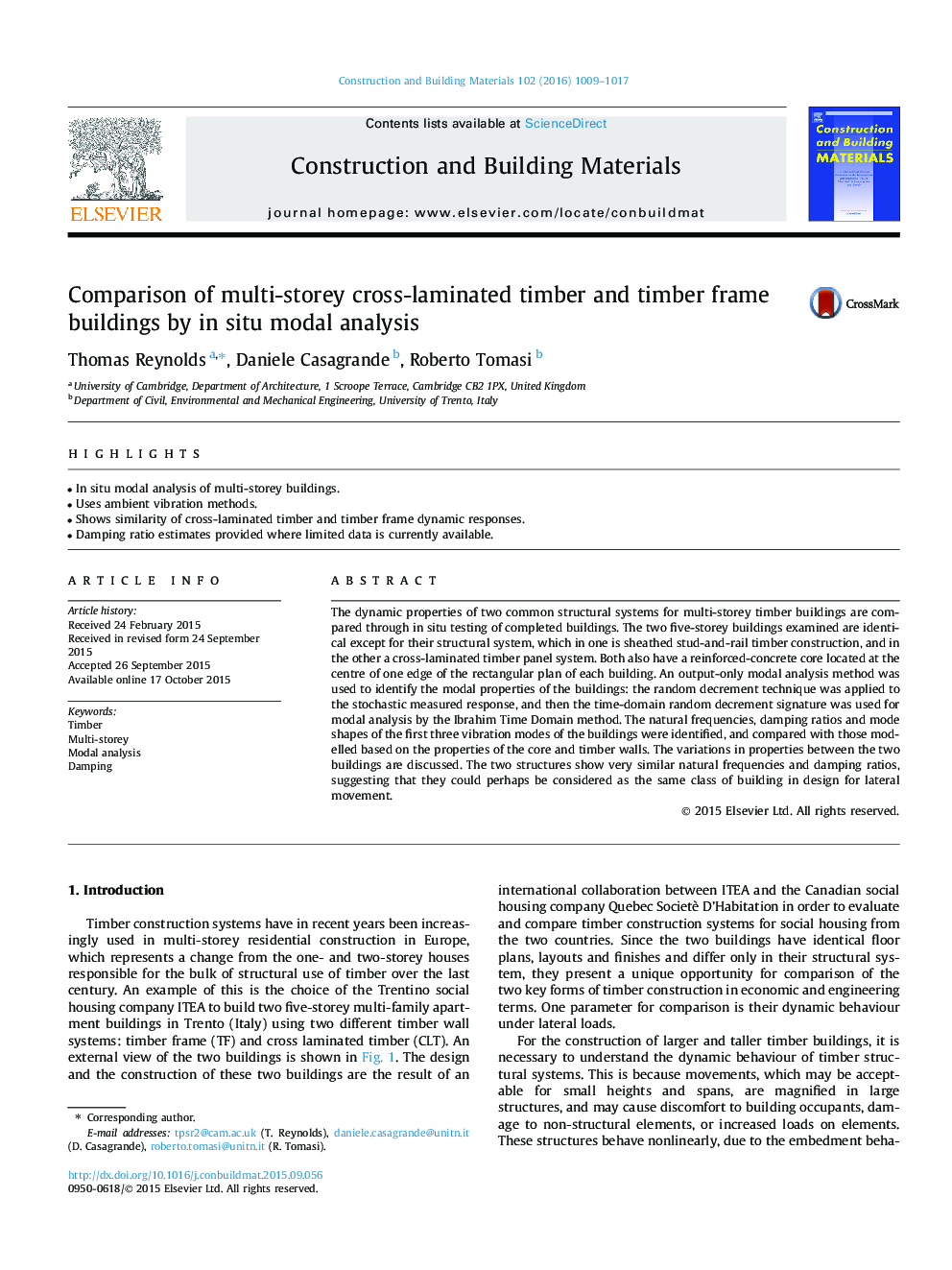| Article ID | Journal | Published Year | Pages | File Type |
|---|---|---|---|---|
| 256432 | Construction and Building Materials | 2016 | 9 Pages |
•In situ modal analysis of multi-storey buildings.•Uses ambient vibration methods.•Shows similarity of cross-laminated timber and timber frame dynamic responses.•Damping ratio estimates provided where limited data is currently available.
The dynamic properties of two common structural systems for multi-storey timber buildings are compared through in situ testing of completed buildings. The two five-storey buildings examined are identical except for their structural system, which in one is sheathed stud-and-rail timber construction, and in the other a cross-laminated timber panel system. Both also have a reinforced-concrete core located at the centre of one edge of the rectangular plan of each building. An output-only modal analysis method was used to identify the modal properties of the buildings: the random decrement technique was applied to the stochastic measured response, and then the time-domain random decrement signature was used for modal analysis by the Ibrahim Time Domain method. The natural frequencies, damping ratios and mode shapes of the first three vibration modes of the buildings were identified, and compared with those modelled based on the properties of the core and timber walls. The variations in properties between the two buildings are discussed. The two structures show very similar natural frequencies and damping ratios, suggesting that they could perhaps be considered as the same class of building in design for lateral movement.
